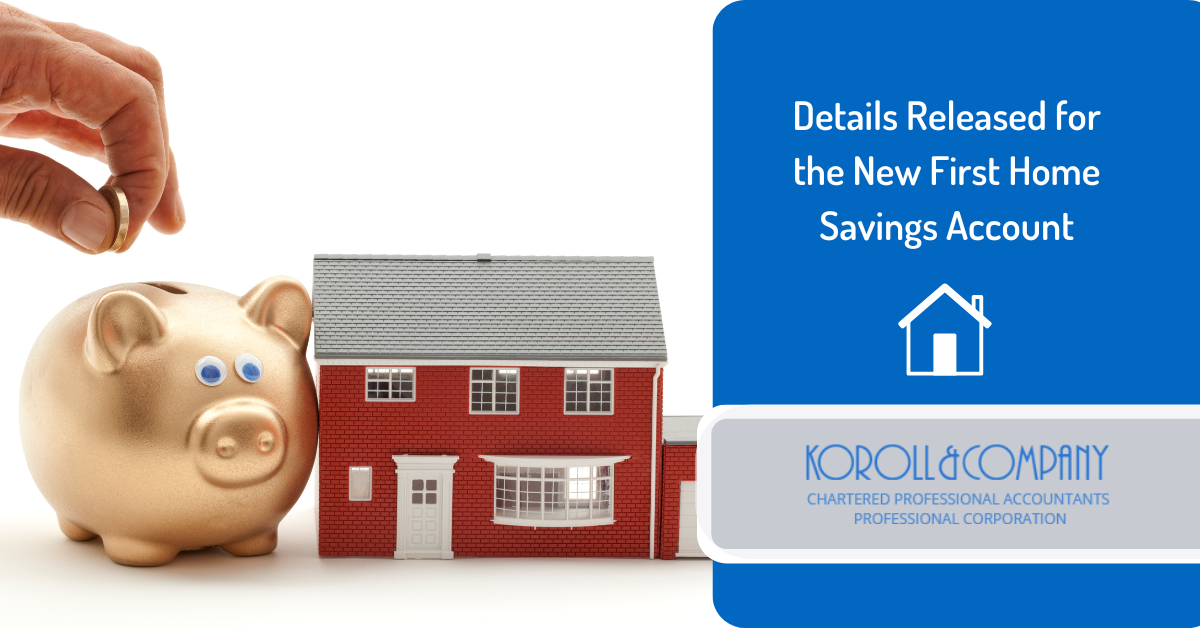 In Budget 2022, the Federal government proposed the introduction of the Tax-Free First Home Savings Account (FHSA). This account will allow first time home buyers to save money for the purchase of their new home. The Bill received a Royal Ascend in December of 2022. The enacted rules permit individuals to use the FHSA and the Home Buyers’ Plan together in respect of the same qualifying home purchase.
In Budget 2022, the Federal government proposed the introduction of the Tax-Free First Home Savings Account (FHSA). This account will allow first time home buyers to save money for the purchase of their new home. The Bill received a Royal Ascend in December of 2022. The enacted rules permit individuals to use the FHSA and the Home Buyers’ Plan together in respect of the same qualifying home purchase.
The FHSA will be like a Registered Retirement Savings Plan (RRSP) in that any contributions you make will be tax-deductible. If the taxpayer wishes, they can carry the deduction to a future tax year instead of claiming it in the year the contribution was made.
Any amounts held in the FHSA can be held in cash, or you can invest the funds in various ways. This includes:
- Mutual funds
- Publicly traded securities
- Government bonds
- Corporate bonds
- Guaranteed Investment Securities (GICs)
Any withdrawals, including investment income like interest and dividends, will be tax free so long as the money is used to purchase your first home. This is similar to the Home Buyer Program (HBP) through your RRSP but, unlike the HBP, you will not have to pay back the money so long as it is a qualifying withdrawal used to buy or build a home. This is what makes it more like a traditional TFSA.
For the home to qualify, you must have a written agreement to build or buy a home before October 1 of the next year and intend to occupy it within a year of building or buying. The lifetime deposit amount of the FHSA will be $40,000 with savers being able to contribute a maximum of $8,000 a year.
To contribute to an FHSA, you must be a Canadian who is 18 or older who has not lived in a home you’ve purchased in the current year or the four previous years.
First year contributions
While the program will not be available until part way through 2023, eligible Canadians will be able to make full year contributions of $8,000.
Carryforwards
When the FHSA was originally announced, the government said that there would be no carryforward for unused contribution room. That has changed.
Now, any unused contribution room will be carried forward to future years. That means, if you only contribute $6,000 in the first year, you can make a contribution of $10,000 ($8,000 + $2,000) in the following year.
Transfers from RRSP to FHSA
The government has confirmed that anybody who has been saving in an RRSP to take advantage of HBP will be able to transfer money from their RRSP to FHSA on a tax-free basis. This means you can withdraw funds from your RRSP without paying tax to deposit them into your FHSA. You will not receive a deduction from income on funds transferred this way. However, once you remove the funds from your RRSP, you will lose the associated contribution room as well.
Not using funds for first home
The government also confirmed that if you do not use the $40,000 (in part or in whole) to buy a home, you can transfer money from your FHSA to your RRSP on a tax-free basis without being limited by or losing contribution room in your RRSP. Similarly, the funds can also be transferred to a Registered Retirement Income Fund (RRIF) on a tax-free basis. You can also transfer it to a TFSA, but there will be tax implications.
In addition, if you open a plan, you must use the funds within 15 years. If you do not, you will have to transfer or withdraw them. Similarly, you must close your FHSA by the end of the year in which you turn 71.
Interactions with HBP
You can use both your HBP and FHSA in conjunction. That means you can withdraw savings up to $40,000 from your FHSA and up to $35,000 from your RRSP under the HBP to build or buy a home.
Spousal contributions
With an RRSP, your spouse or common law partner can make contributions to a spousal RRSP and claim the contribution as a deduction on their taxes. This is not the case with the FHSA.
With the FHSA, only the account holder can claim deductions related to contributions.
However, you can contribute funds provided by your spouse or common law partner to your FHSA. In these situations, the attribution rule would not apply to investment income earned in the FHSA. That means investment income would not be attributed back to your spouse or partner for funds they provide you, which were deposited in your FHSA.
For more information on the FHSA and how you can use it to help with the purchase of your first home, contact us today.






